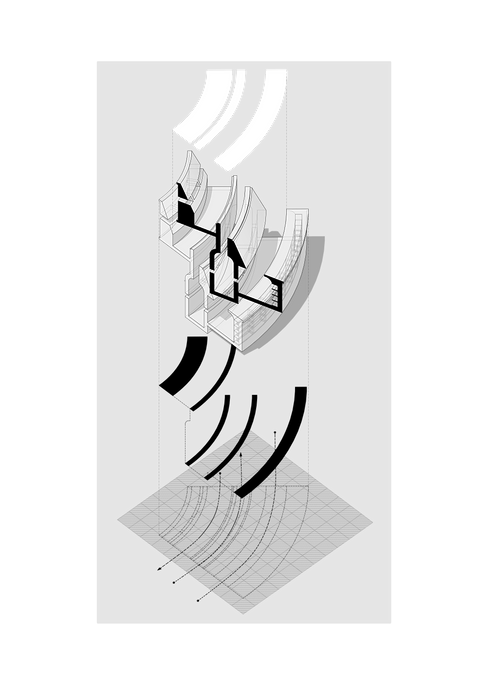archi sam

Hierarchical Thresholds
Third Year, 2nd Semester | National University of Singapore
Typology: Library
Location: Margaret Drive, Singapore
Year: 2021
Disability & Threshold - The Eye of the Beholder
The pitfall of approaching inclusive design purely from an infrastructural standpoint without first seeking to address the systemic perception of disability only results in the ruin of the former. Thus, an inclusive space is one that engages in equal parts infrastructure and society, augmenting how disability is perceived and enlivening the myriad of bodies it houses.
Before one begins to engage the assumptions of spaces deemed appropriate for the confluence of typical users and people with disabilities, the logic of a threshold must first be defined. An interrogation into its definition lays bare a contradictory tone wherein its duality is summarized as such: the level at which one begins to feel or react to something; a limit or boundary. The former alludes to the possibility of surmountability, whilst the latter is an unsurpassable delineation.
By situating thresholds vis-a-vis the topic of disability, one begins to see how both run parallel to the other with regards to visuality. The quote “disability is in the eye of the beholder” stems from the prejudices inherent in the viewer, and is not at all dissimilar to how the surmountability of a threshold is contingent on the eye that perceives it.
Dwelling the Threshold
To dwell the threshold is to formalize Heterotopia - a parallel space that contains undesirable bodies to make a utopian space possible. The accommodating of differences gives the spaces what Michel Foucalt describes as having the property of being in relation to all spaces in a way that inverts the set of relations to expose an alternative to the status quo.
As prejudices are founded upon the lack of knowledge and aroused by sight, the pursuit of a Heterotopic space that accommodates differences is undertaken through an architecture of observation that gives the differing user groups time to acquire knowledge of the other through an architecture of observation wherein prejudices are set aside to allow for a truly inclusive space.
‘The Library as Streetscape’ - Disability and the Library Typology
To embrace disability is first to invert the very nature of a library - exclusive, dense, quiet, private. By regarding the library as a public space such as the streetscape is to override the exclusive character and deemed accepted behaviours that bind it, allowing for a broader range of behaviours and conditions.
An inclusive library is thus one that embodies the inclusivity of the streetscape - the ability to contain a myraid of bodies along with having what Michel Foucault describes as the property of being in relation to all spaces.











